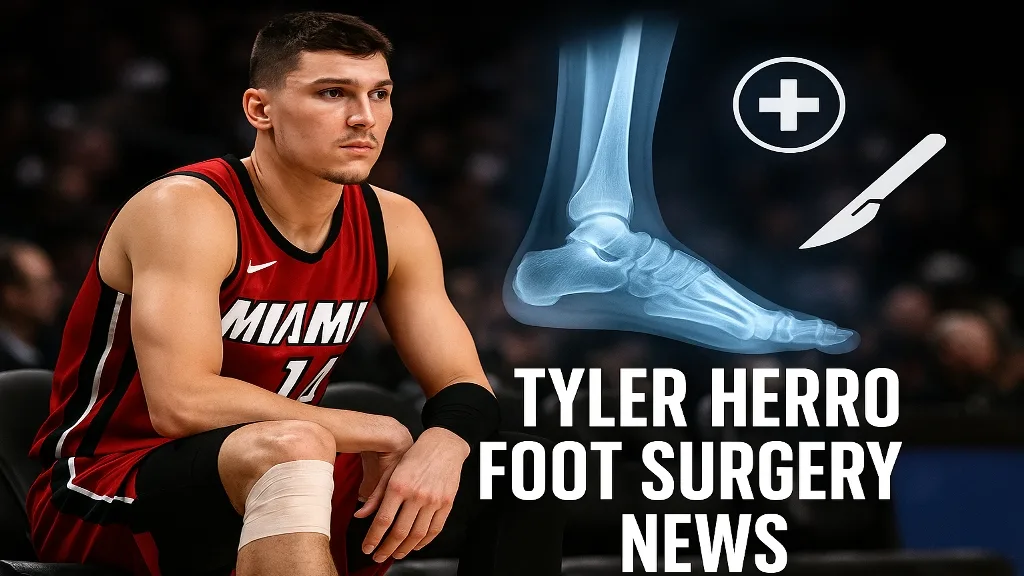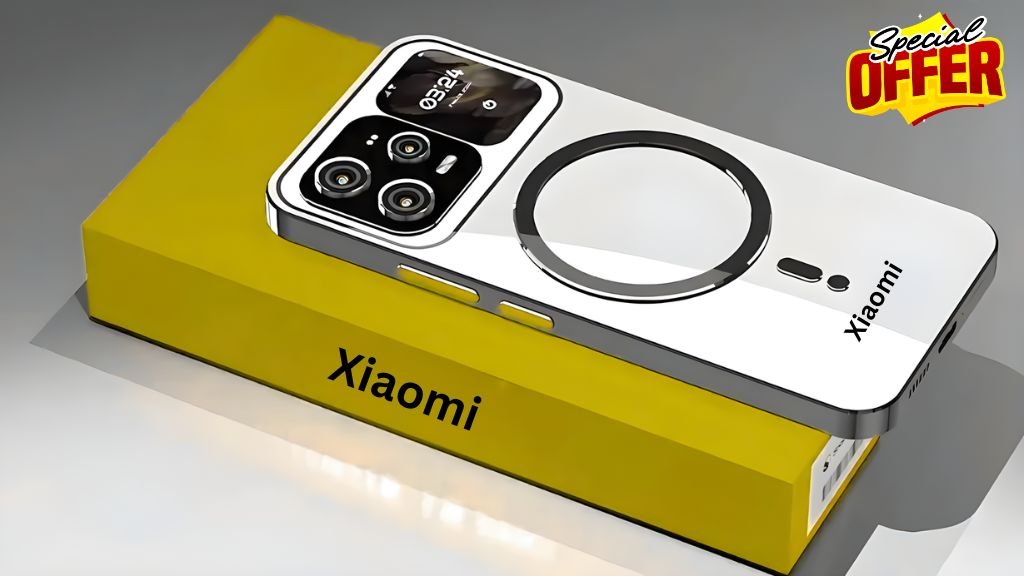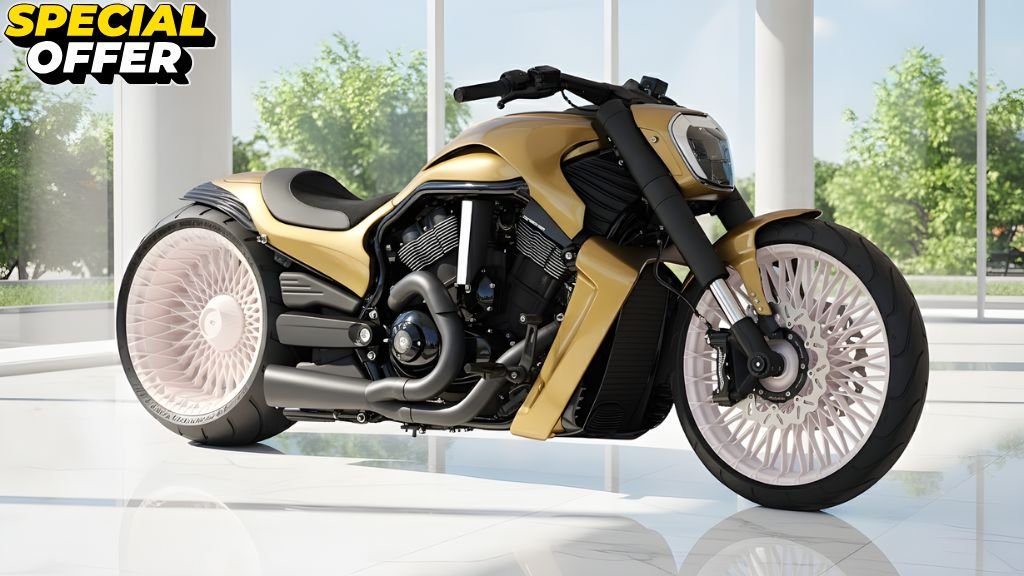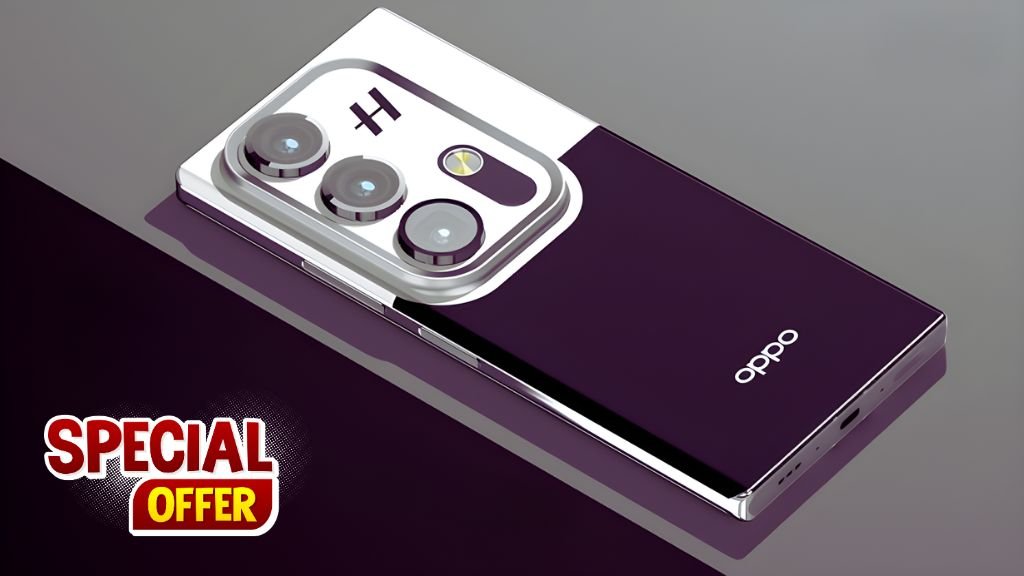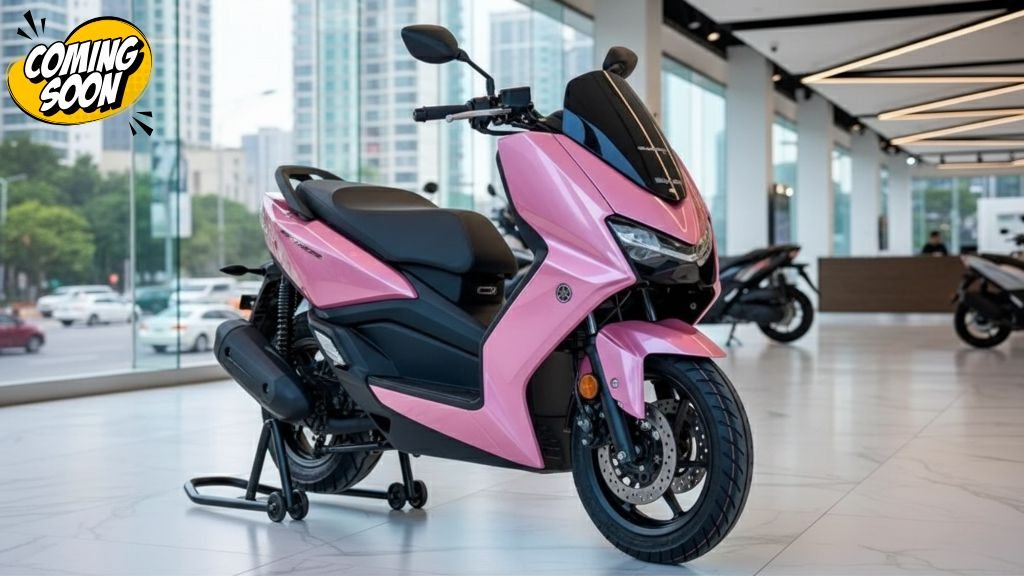Tyler Herro Foot Surgery: offseason turned into a surgical timeline, and with it the Miami Heat’s opening weeks just became a coaching puzzle. The All-Star guard underwent a 90-minute procedure to alleviate posterior impingement syndrome in his left ankle/foot and is projected to miss roughly eight weeks—placing his return window around mid-November if rehab benchmarks are met.
That means training camp reps, preseason rhythm, and the first stretch of regular-season games will arrive without Miami’s most dynamic pick-and-roll shotmaker and top returning scorer. The Heat have navigated absences before, but Tyler Herro’s specific portfolio—off-the-dribble threes, late-clock creation, and pull-up gravity that bends defenses—requires a bespoke replacement plan rather than a simple “next man up.”
In practical terms, Erik Spoelstra must redesign early-season offense, stagger roles around Bam Adebayo, and decide which guards inherit Tyler Herro 25-plus-usage possessions while preserving the team’s defensive floor. The stakes aren’t abstract: in a balanced Eastern Conference, dropping winnable games in October and early November can quietly torpedo playoff seeding later.
What the Tyler Herro Foot Surgery actually addressed—posterior impingement and why it lingers for guards
Posterior ankle/foot impingement typically involves soft-tissue and bony structures crowding the back of the ankle joint, creating pain with forced plantarflexion (think: toe-pointing motions in jump shots, floaters, and high-speed decelerations). For a guard like Herro—whose game relies on hard stops into step-backs, quick ankle angles around screens, and burst into mid-range pull-ups—the condition can nibble away at mechanics until shots fall short, first step slows, or a player subconsciously avoids certain movements.
Conservative care (rest, injections, targeted therapy) often buys time, but persistent symptoms can push athletes toward surgical decompression to clean up irritants. The goal: reduce posterior crowding, restore pain-free range, and allow explosive plantarflexion without the stabbing catch that can spook a shooter.
In lay terms, the procedure aims to give Herro his “pop” back. Eight weeks on paper is a timetable, not a promise; most guards spend weeks rebuilding strength, proprioception, and confidence in the ankle before their rhythm returns against live coverage.
Timeline math: eight weeks means a mid-November checkpoint—and what that implies
Circle a soft target in mid-to-late November for reevaluation rather than a guaranteed clearance, because “eight weeks” typically refers to medical recovery milestones, not full basketball conditioning. Miami’s opening 10–12 games could pass without Herro, depending on scheduling density. Even post-clearance, there’s often a minutes ramp-up (e.g., high-teens to low-20s, then high-20s, then back to 32–35) and role normalization.
For rotation continuity, Spoelstra will want a stable shot-creation hierarchy before reintegrating Herro as a primary engine; that argues for a short-term plan that can also serve as a long-term wrinkle once Herro returns—think two-track offense that doesn’t whiplash the locker room when roles change.
What Miami loses without Tyler Herro: pull-up threes, late-clock rescues, and gravity
Herro’s offensive fingerprint is unusually specific for Miami: he thrives in empty-corner PnR with Bam, hunts drop coverage with pull-ups, and flashes the in-between pogo-stick game (floaters, hesitation, paint touch-kick-outs) that keeps weak-side tags honest. His pull-up three is the pressure valve when a possession bogs down; remove that and defenses can tighten the paint and stunt harder at Bam’s short-roll catches.
Without Tyler Herro, Miami’s three-point volume risks skewing more catch-and-shoot and less off-the-dribble, which matters late in clocks and in playoff-style defenses baked into regular-season scouting reports. On nights when pace drags, Tyler Herro ability to manufacture eight points from thin air across two or three possessions is the difference between a 7–0 opposing run and a 6–5 Heat counter.
The Tyler Herro–Bam dance: why that two-man game is hard to replicate
Few duos in the East spam as many micro-reads as Herro and Bam: snug pick-and-rolls that morph into handoffs, ghost screens, keepers, and re-screens—each forcing split-second choices on the top defender and low man. Tyler Herro footwork into side-step threes punishes under coverage; Bam’s touch on short rolls punishes any overhelp.
Swap Tyler Herro out and you can still run the shell of it, but the threat matrix shrinks unless the replacement guard can pull-up consistently from 26 feet and manipulate pace inside the arc. That’s why Spoelstra’s solution likely won’t be to “copy-paste Herro” with one player; it will be a pie chart.
Rotation ripple effects: who inherits the usage—and how
Expect a committee approach across four buckets:
- On-ball shot creation: Veteran scoring guards (and any new acquisition) absorb first-side PnR reps, especially in second units when Bam sits. Spoelstra will test which combinations produce clean paint touches without bleeding turnovers.
- Movement shooting volume: Miami can elevate a pure spacer to super-role status—more staggers, more “Elevator” actions, more weak-side pin-downs—to approximate Herro’s gravity even if the self-creation isn’t there.
- Bam hub usage: More split cuts from the elbow, “Chicago” actions (pin-down into DHO), and 5-out motion with Bam as the passer can manufacture quality looks while limiting the need for repeated high PnR.
- Staggering patterns: The bench must carry creation in the non-Bam minutes; Spoelstra could stagger one primary guard with second units to prevent droughts, leaning on simplified pistol actions and early drag screens in transition.
The common denominator: no single player copies Herro, but the offense can “add up to Herro” by redistributing his possessions into roles that players can sustainably execute.
Scheme tweaks that buy points without Tyler Herro pull-up game
Miami has a library of automatics that can scale:
- Early drag PnR before the defense is set. You don’t need a Herro-level pull-up artist if you can force cross-matches and deep paint catches in the first eight seconds.
- Empty-corner DHOs with Bam. Even an average pull-up shooter can generate paint pressure when the weak side is cleared and Bam screens twice.
- Spain pick-and-roll variants. Backscreening the big lifts a helper and frees the roll; it’s a creator-friendly template for non-Herro guards.
- Stacked weak-side actions. Run simultaneous pin-downs to create a catch-and-shoot cascade if the first look is denied—Miami’s shooters thrive when the ball arrives on time and on target.
- Post split-cuts. Slot Bam at the nail or low block, back-screen and slip. The reads are simple, the looks are clean, the turnovers tend to be low.
Expect Spoelstra to lean into defense-to-offense: crash selectively, sprint the corners, and hunt early threes to cover for any half-court creation dip.
Defense and pace: the quiet silver lining
Herro’s absence doesn’t improve Miami’s defense by itself—he has made strides as a positional defender—but it can simplify matchups and lineups that skew bigger on the wing. Bigger guards at the point of attack plus Bam’s backline mastery can nudge Miami’s defensive rating into top-10 territory in the short term.
If the Heat can live around league average offensively until Herro returns, their defense can keep them on the right side of .500. Also watch the pace metric: with fewer early-clock pull-ups, Miami may run more by design, using hit-ahead passes and drag screens to avoid grinding in the half court.
The contract and cap angle: leverage flows both ways
Injury timing intersects with money. Tyler Herro All-Star leap and career-best efficiency established a strong negotiating baseline, but an early-season absence introduces uncertainty for both sides. If the Heat’s offense sputters without him, it underscores his worth; if the team hums with redistributed usage, Miami can argue that system resilience caps his ceiling value.
The cleanest outcome for both parties is a successful return with restored burst and sustained availability—health is the single best contract argument a scorer can make.
Fantasy and betting lens: minutes ramp, shot diet, and volatility
For fantasy managers, circle the basic progression: stash → return with minutes cap → two-week stabilization. Expect a temporary dip in pull-up volume and a slight uptick in catch-and-shoot attempts as Herro re-acclimates. Free-throw rate may lag early if he’s less eager to absorb contact on plants. For betting models, the Heat’s early-season team total might trend under on back-to-backs, while Bam’s assist and potential assists could climb as he shoulders more hub work. Opponent scouting will blitz Miami’s non-Herro creators until they prove they can punish hard shows.
Historical comps: guards returning from posterior impingement work
Case studies suggest guards can return to form after posterior decompression when timelines are respected and force-plate data guides progression. The keys are plant confidence and repeated high-speed change of direction tolerance. It’s common to see the three-point percentage stabilize first (cleaner mechanics, less traffic), then rim attempts and free-throw rate climb as the athlete trusts hard plants. That sequencing is the tell that the ankle has passed the “doesn’t hurt” stage and reached the “can weaponize it” stage.
A rehab roadmap that makes basketball sense
A functional plan typically moves through four basketball-relevant checkpoints:
- Low-impact range and isometrics → swelling control and joint quieting.
- Closed-chain strengthening and proprioception → balance boards, single-leg control, band-resisted plantarflexion.
- Return to linear and lateral plyometrics → short-amplitude hops, then decel-to-accel drills that mirror PnR footwork.
- Skill reintegration under fatigue → live shooting off relocations, then pick-up runs with scripted movement constraints to stress the repaired range.
Data (force plates, inertial sensors) can objectively confirm symmetry so the “feels normal” vibes match the numbers.
The schedule gauntlet problem—and how Spoelstra can steal wins
Every early schedule features trap games: road back-to-backs, altitude legs, and opponents with top-five defenses that devour half-court creators. Without Tyler Herro, the Heat can manufacture variance: shoot volume threes, pound the offensive glass in selected matchups, and crank defensive pressure to win the possession math.
Spoelstra’s rotations should chase the “+6 possessions” goal—fewer live-ball turnovers, more second chances, and a free-throw edge—to keep games inside the clutch window where Bam’s defense and late sets can close.
The Bam-centric offense: a feature, not a patch
If there’s a philosophical pivot available, it’s doubling down on Bam as a decision hub. Give him elbow touches early and often; surround him with two movers and two spacers; commit to back-screening the low man every time he dribbles. It’s a system that scales with Tyler Herro on the floor too, transforming his role into a super-mover who can both catch-and-shoot and re-enter two-man actions. In that sense, the Herro-less weeks can become a rehearsal for a more versatile version of Miami’s offense once he’s back.
What success looks like by the time Tyler Herro returns
A successful eight-week stretch won’t be about gaudy record lines; it will be about process metrics:
- Turnover rate parked in the league’s top-12.
- Defensive rebounding percentage stable despite extra small-ball.
- Secondary creators generating at least 0.95 points per direct PnR in second units.
- Bam averaging a career-high in potential assists while maintaining efficiency.
- One movement shooter cresting 9 three-point attempts per 36 to replicate gravity.
If Miami hits those marks and sits a few games above .500, Tyler Herro return vaults them back into top-six-seed conversation without sprinting uphill.
The human factor: mindset, patience, and the first game back
Athletes talk about the mental snag more than the physical after lower-extremity procedures: trusting the ankle at full speed, absorbing contact without bracing, and letting the game “flow” again rather than playing protectively. Tyler Herro public posture has been defiantly optimistic, a tone that tends to boost locker-room energy during the wait. When he returns, the first made pull-up above the break and the first hard plant into a floater will be the landmarks—moments that confirm to teammates and to Herro himself that the old moves are alive.
Long-term implications: a cleaner ankle can raise Tyler Herro ceiling
If the surgery does what it’s designed to—reducing posterior crowding and freeing the ankle to snap through shots—Tyler Herro efficiency could tick up over a multi-month horizon. A cleaner push-off can add inches to separation on step-backs, tighten rhythm off DHOs, and normalize foot strike patterns that protect upstream joints (knee, hip). That compounds into better shot quality and durability. For Miami, that’s the optimistic arc: survive the first quarter of the season, then enjoy a more explosive, more comfortable Herro for the remainder.
Bottom line: survive October, recalibrate in November, sprint in December
Tyler Herro surgery is a gut-check to start the year, but also an opportunity for identity work. Use the weeks ahead to deepen Bam’s hub usage, pressure the rim by committee, and elevate a movement shooter to high-volume status. If Miami can bank wins with defense and possession math while the offense finds its gears, Herro’s return won’t feel like a rescue—it’ll feel like an accelerant. The season won’t be decided in October, but it can be quietly secured there.
